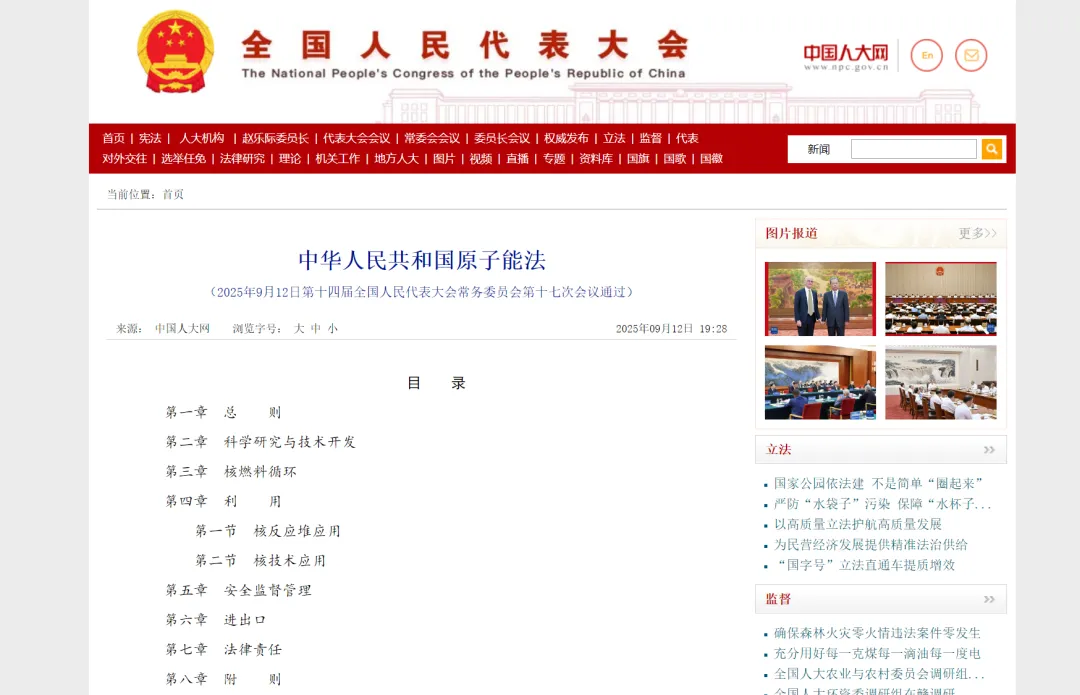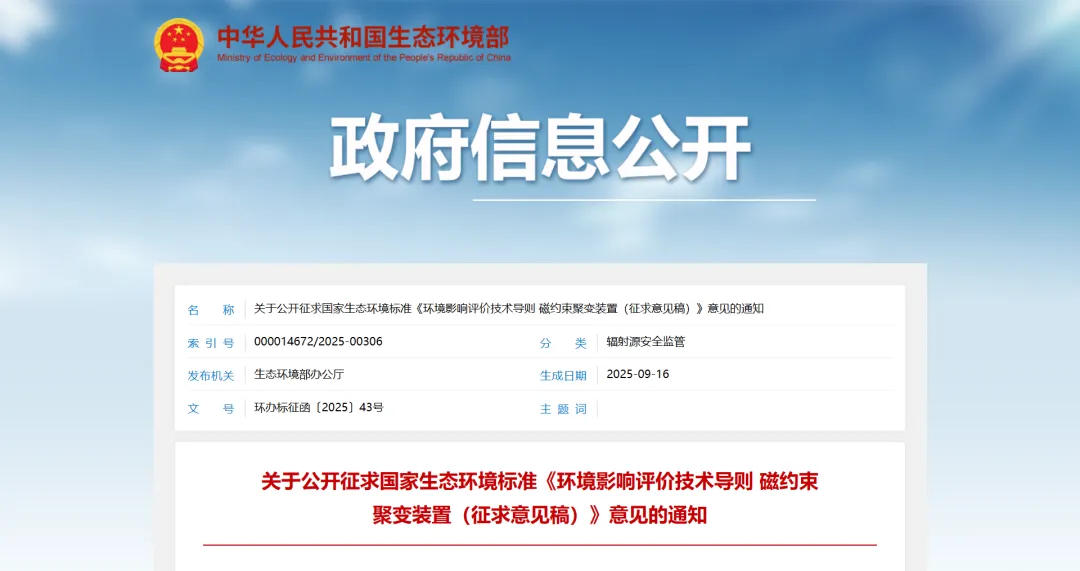In-Depth | Encouragement and Support! Nuclear Fusion Development as Seen Through the Newly Enacted Atomic Energy Law
When discussing their impressions of controlled fusion by 2025, most people emphasize the word “rapid”—even those outside the industry are beginning to sense the accelerated pace of nuclear fusion development. What seemed like a pipe dream yesterday is now within reach today. From the HIFU-3 device achieving its first dual-hundred-million-degree milestone to the establishment of China Fusion Energy Co., Ltd., from Helion Energy launching construction of the world's first fusion power plant to HHMAX-ENERGY achieving plasma ignition in China's first commercial linear field-reversed configuration (FRC) fusion device—both project advancements and capital inflows demonstrate a rapid upward trajectory. Thus, 2025 is hailed as the “inaugural year” for commercial nuclear fusion.
The Atomic Energy Law of the People's Republic of China, enacted this month, has injected new momentum into accelerating nuclear fusion research. It combines policy statements with actionable guidance, aiming to expedite the realization of nuclear fusion power generation. This initiative stems from both long-term energy needs and the necessity to compete in future energy landscapes among major powers. Encouragingly, China's nuclear fusion sector is witnessing a flourishing landscape of innovation. Through multi-directional, multi-tiered, and multi-technological approaches, China's nuclear fusion research and development has surged forward, propelling the nation into the world's leading tier.
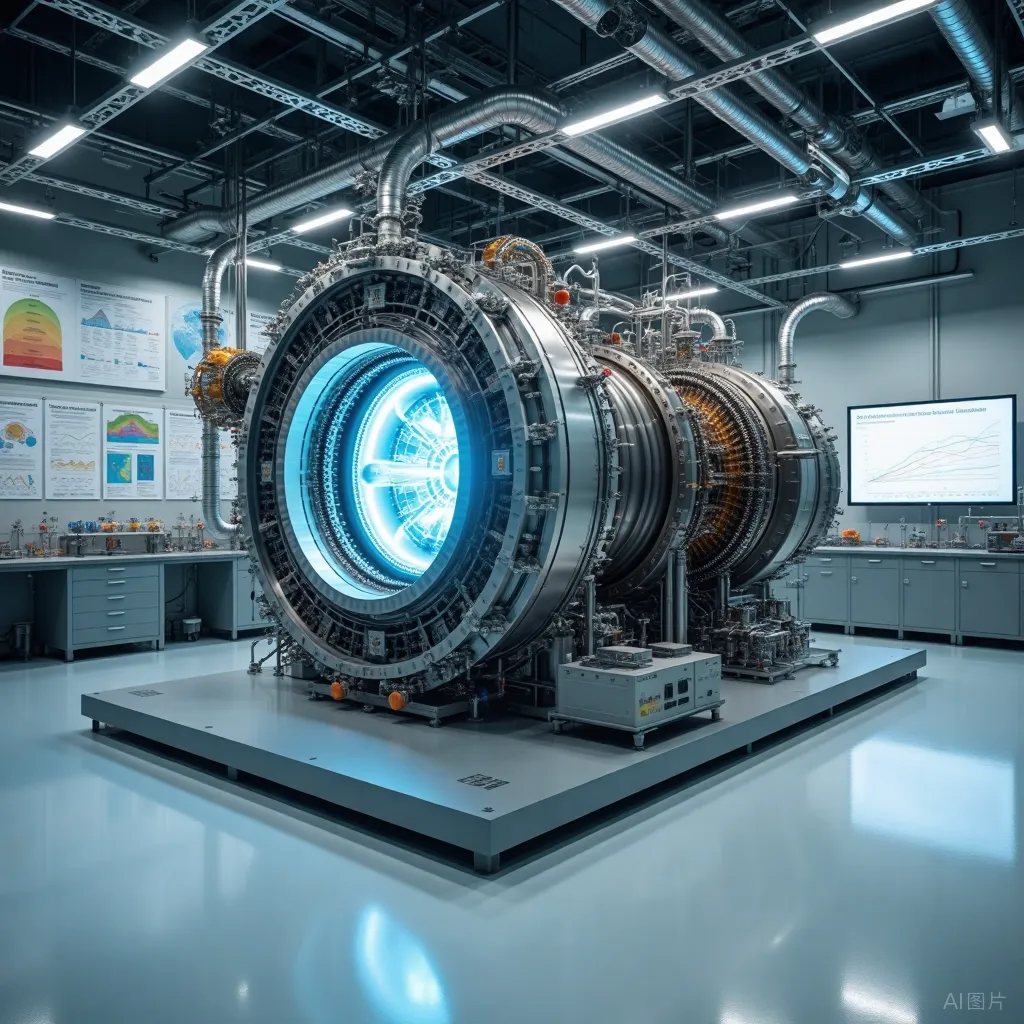
From Law to Action On September 12, China's nuclear energy sector reached a milestone as the Atomic Energy Law of the People's Republic of China was adopted and promulgated by the 17th Session of the Standing Committee of the 14th National People's Congress. The law will take effect on January 15, 2026. This legislation ends the historical absence of overarching legal frameworks in China's nuclear energy domain. It holds significant importance for coordinating development and security, promoting the healthy growth of nuclear power and nuclear technology application industries, fulfilling international obligations, and projecting the image of a responsible major power.
The promulgation of this law holds equally significant implications for the development of China's nuclear fusion industry. Article 14 explicitly states: “The state encourages and supports scientific research and technological development in the field of controlled thermonuclear fusion.” Article 39 addresses the application dimension of nuclear fusion, proposing: “The state shall establish a supervision and management system tailored to the characteristics of controlled thermonuclear fusion and conducive to its application, implementing a graded and categorized management approach for fusion fuels and fusion devices (facilities).”
The Atomic Energy Law of the People's Republic of China was officially promulgated.
Related implementation actions were promptly initiated. Four days later, the General Office of the Ministry of Ecology and Environment issued the "Notice on Soliciting Public Comments for the National Ecological and Environmental Standard ‘Technical Guidelines for Environmental Impact Assessment of Magnetic Confinement Fusion Devices (Draft for Comment)’, seeking input from 21 research institutes and fusion enterprises, including HHMAX-ENERGY, to prepare for the release of the relevant standards. In response to the call for input, HHMAX-ENERGY actively provided feedback based on its experience in device R&D and commercialization plans, driving the advancement of nuclear fusion and its next-stage applications.
Within a week of the promulgation of the Atomic Energy Law, the Ministry of Ecology and Environment issued a call for public comments on standards related to fusion energy.
Institutions and policies are undoubtedly the most effective catalyst for industrial development. In 2024, HHMAX-ENERGY participated in the Ministry of Ecology and Environment's solicitation for the “Regulatory Requirements for Grading and Classification of Fusion Devices (Draft for Comment)” and became one of the first beneficiaries of this regulation. In April 2025, the Ministry of Ecology and Environment formally issued the “Notice on Matters Related to Radiation Safety Management of Fusion Devices.” Based on this regulation, HHMAX-ENERGY's fusion device successfully completed its classification, laying a solid foundation for subsequent licensing, commissioning, and operational testing. We believe the newly enacted Atomic Energy Law will also trigger a chain reaction, driving the introduction of policies and regulations from central to local levels. This will further refine and accelerate the standardized, rapid development of the nuclear fusion industry.
Dual Pressure: Demand and International Competition On September 23, the latest data from the National Energy Administration showed that in August, total electricity consumption reached 1.0154 trillion kilowatt-hours, marking a 5.0% year-on-year increase and surpassing the trillion-kilowatt-hour threshold for two consecutive months. This growth stems from both the direct impact of summer heatwaves and the sustained release of production capacity across various industries, particularly driven by new growth from the emerging economy. Statistics show that from January to August, electricity consumption in the information transmission, software, and information technology services sector grew by 15.8% year-on-year. Driven by the rapid development of mobile internet, big data, and cloud computing, electricity consumption in internet and related services surged by 28.8%. Meanwhile, electricity consumption in the wholesale and retail sector increased by 11.8%, with the charging and battery swapping services segment seeing a significant 44.1% year-on-year growth due to the rapid expansion of electric vehicles.
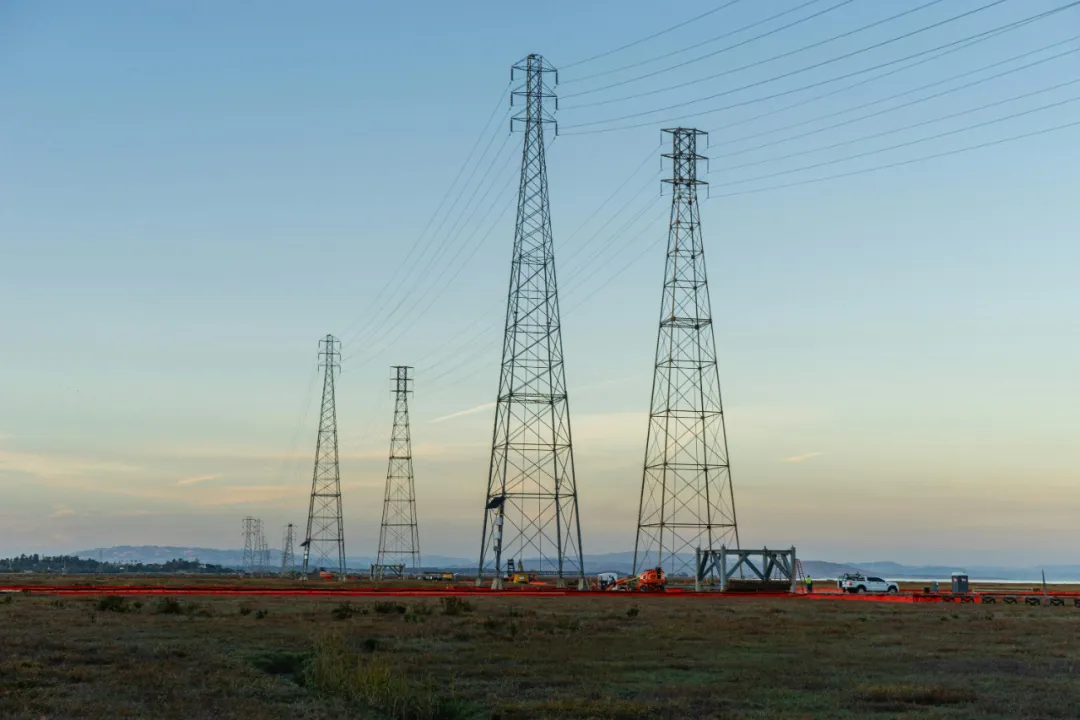
China's monthly electricity consumption has surpassed one trillion kilowatt-hours for consecutive months.
The data clearly indicates that the advancement of artificial intelligence is driving sustained growth in electricity demand. While this currently does not pose a supply constraint, it will create a significant gap in the future. If there isn't enough electricity, can we simply build more power plants? Certainly, but traditional fossil fuel power plants can no longer be constructed.
On September 24, President Xi Jinping delivered a video address at the United Nations Climate Action Summit and announced China's new round of nationally determined contributions: By 2035, China will reduce its economy-wide net greenhouse gas emissions by 7% to 10% from their peak, striving to achieve even better results. Non-fossil energy consumption will account for over 30% of total energy consumption. The combined installed capacity of wind and solar power will exceed six times the 2020 level, striving to reach 3.6 billion kilowatts. Forest stock volume will surpass 24 billion cubic meters. New energy vehicles will become the mainstream in new vehicle sales. The national carbon emissions trading market will cover major high-emission industries. A climate-resilient society will be basically established.
This means that green electricity must form the backbone of China's future energy mix. In the short term, wind and solar power will take center stage. However, these sources are unstable and cannot serve as baseload power, posing significant challenges to the stability of the entire power grid. Clean, stable, and efficient nuclear energy appears to be the optimal solution. Yet, due to safety concerns, the scale of nuclear (fission) power plants has always been constrained. Consequently, global attention has shifted to nuclear fusion. Compared to nuclear fission, fusion offers enhanced safety, eliminates nuclear waste disposal challenges, and boasts abundant fuel sources (derived from seawater). Once operational, it would provide humanity with an inexhaustible supply of clean energy. This is why Huawei CEO Ren Zhengfei, in an interview with People's Daily, placed nuclear fusion alongside artificial intelligence as “technological revolutions that could reshape human society.”
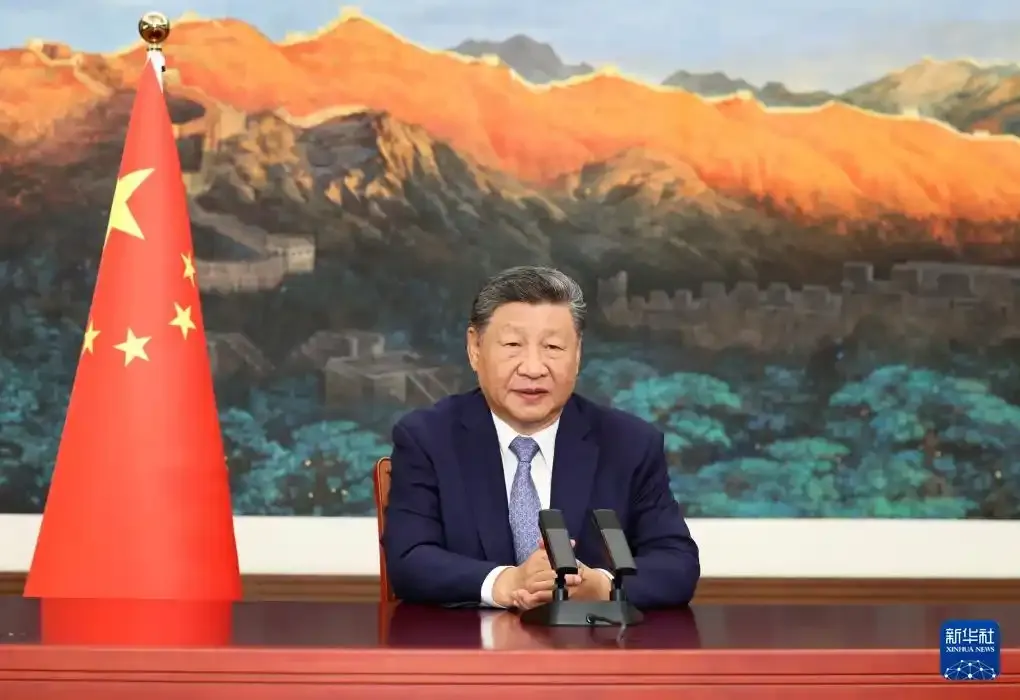
On September 24, Chinese President Xi Jinping delivered a video address at the United Nations Climate Change Summit (Photo by Xinhua News Agency)
Internationally, nuclear fusion is also viewed as a new round of energy competition among major powers. In March this year, CNBC (Consumer News and Business Channel) released a 13-minute documentary that, while introducing nuclear fusion, comprehensively focused on the competition between China and the United States in the field of nuclear fusion. It stated that China and the United States are racing to create the first grid-scale nuclear fusion energy. The documentary revealed widespread concerns within the U.S. nuclear fusion industry about China's rising nuclear fusion capabilities and its imminent potential to surpass the United States. It called on the U.S. government to take action by increasing investment and support in the nuclear fusion sector to help American companies win the competition.
In fact, since the beginning of this year, the United States, Japan, and European nations have all increased their investments in the field of fusion energy. On September 10, the U.S. Department of Energy (DOE) announced a $134 million investment to support two programs aimed at securing America's leadership in emerging fusion technologies and innovation.
Earlier on September 3, the European Commission adopted a second complete framework comprising seven specific proposals, laying the groundwork for the EU's next long-term budget for 2028–2034. The fusion energy sector received strong backing in this process. Under the new budget proposal, €5.4 billion of the €6.7 billion allocated to the Euratom Research and Training Programme will be directed toward fusion energy development. Key projects receiving support include the International Thermonuclear Experimental Reactor (ITER) with €4 billion and fusion research with €1.4 billion.

During U.S. President Trump's visit to the UK, the United States and the United Kingdom reached the Technology Prosperity Pact, strengthening cooperation in the field of nuclear fusion.
Even during U.S. President Trump's recent visit to the United Kingdom, the United States and the United Kingdom jointly announced the signing of a Technology Prosperity Partnership, aimed at promoting cooperation in strategic technological fields such as artificial intelligence, nuclear fusion, and quantum technology that align with the mutual interests of both nations.
A Path of Innovation Where a Hundred Flowers Bloom Faced with urgent electricity demands and international competitive pressures, China has also intensified its efforts in nuclear fusion research and project advancement, achieving significant milestones. Leading national institutions such as the Institute of Plasma Physics at the Chinese Academy of Sciences and the Southwest Institute of Physics under the China National Nuclear Corporation have accumulated extensive research and project development experience on large tokamak devices. National scientific facilities like Huanliu-3 and EAST have repeatedly set new operational records. Meanwhile, backed by market capital, private enterprises like HHMAX-ENERGY, Energy Singularity, and Xinghuan Fusion Energy have emerged. Their mission is to break down the massive “fusion aircraft carrier” into portable “energy drones,” transforming complex scientific research into faster, lower-cost, and more commercialized “miniature artificial suns.” In the controlled nuclear fusion race, China is fostering an open ecosystem where the “national team” and private enterprises strategically complement each other. Technologically, this approach has led to a “diverse and flourishing” landscape, significantly accelerating China's nuclear fusion R&D progress.
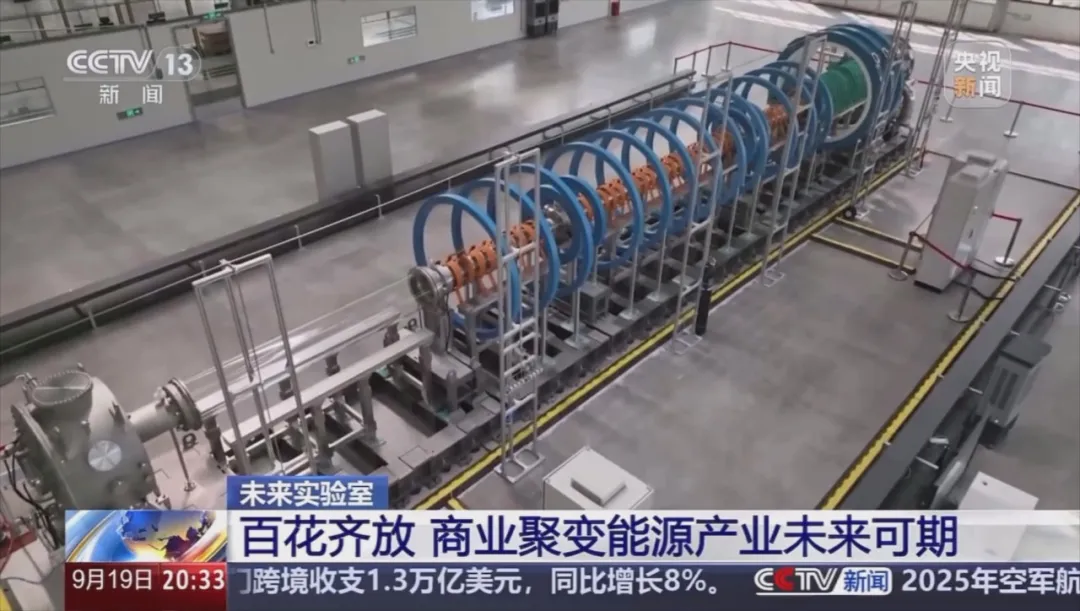
CCTV News Channel's “Oriental Horizon” Program Spotlights HHMAX-ENERGY's FRC Fusion Device
Taking HHMAX-ENERGY as an example, the company focuses on the Linear Field-Reversing Cavity (FRC) technology, aiming to achieve commercial fusion power generation with more compact and flexible devices. On July 18 this year, the main unit of HHMAX-ENERGY's FRC device HHMAX-901 was completed and successfully achieved plasma ignition, attracting widespread attention. On September 19, CCTV News Channel's “Oriental Horizon” aired the latest episode of its special series “New Quality Productivity in China: Future Laboratories.” Titled “A Hundred Flowers in Full Bloom: Commercial Fusion Energy Industry Shows Promising Future,” the segment focused on China's commercial fusion energy development. Reporters visited HHMAXEnergy's R&D base to explore the application and progress of FRC controlled nuclear fusion technology, conducting an exclusive interview with company founder and Chairman Xiang Jiang. This marks CCTV's first-ever spotlight on FRC technology and its commercial applications.
A competition held in Chengdu in September also highlighted the growing attention and importance placed on FRC technology. On September 10, the provincial finals of the 10th “Maker China” Sichuan SME Innovation and Entrepreneurship Competition commenced in Pidu District, Chengdu. HHMAX-ENERGY participated with its project “Linear Field Reversal Configuration (FRC) Controllable Nuclear Fusion Device.” With its leading technical solutions and innovative “gradual development” model, the company stood out among 35 enterprise-group projects, winning the first prize in the enterprise category. This achievement underscores the government and society's emphasis on diverse technological pathways in the fusion field, while also highlighting the vibrant vitality of China's commercial fusion companies and the FRC technology route.
Conclusion: For nuclear fusion, only by pursuing multiple technological pathways simultaneously, securing substantial venture capital backing, and engaging more talent and industry players can this ultimate energy source truly become a reality. Benefiting from China's innovative ecosystem that combines a “nationwide mobilization system with market vitality,” both state-backed institutions and private enterprises are advancing in tandem, fostering a flourishing landscape that propels progress in China's fusion technology R&D. The timely enactment of the Atomic Energy Law and its provisions supporting fusion have sounded the charge for China's fusion development. The path from laboratory to reality is becoming increasingly clear, with the first fusion beam of light now within reach. China is poised to once again emerge as a leader in this field.

